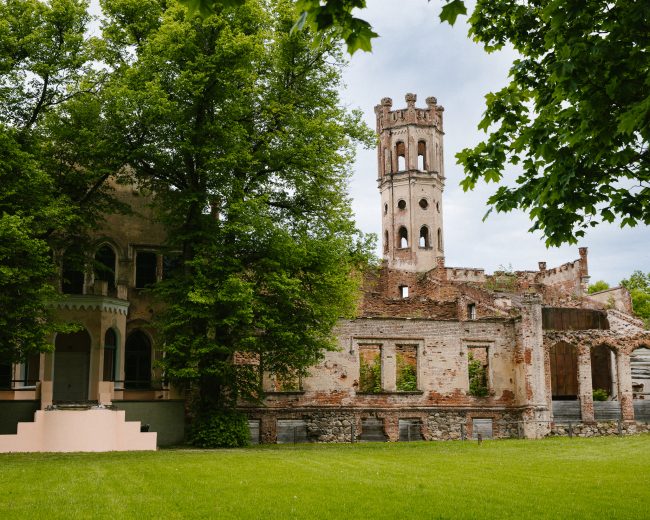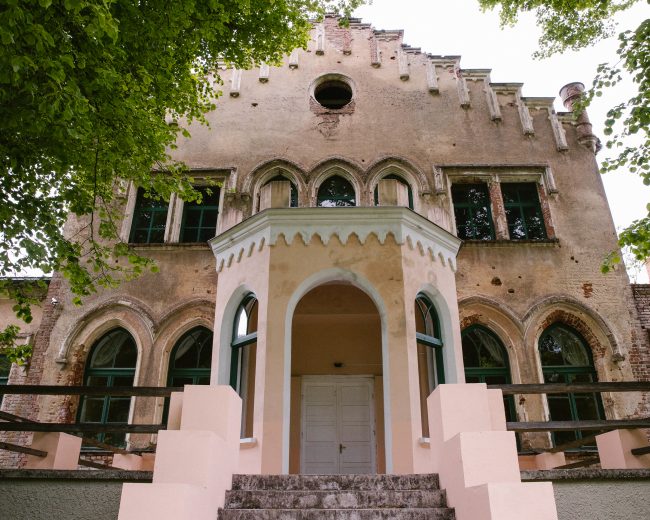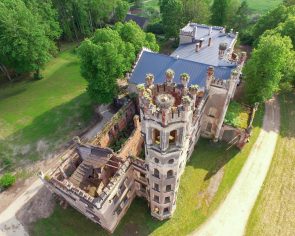Odziena Manor and Castle Brewery
At the foot of the Vidzeme highlands there is a legendary manor and its complex, which has been reborn from its long sleep for some time and is becoming more and more beautiful!
Accommodation
Flavours / Products
For events
For families
For groups (11+)
History and culture
In winter
Landscape and nature
People and location
Urban environment
The spacious complex is located in a scenic, ancient village of the Vidzeme highlands with many photogenic angles and walking opportunities.
The Odziena manor complex offers an opportunity to immerse yourself in the atmosphere of the end of the 19th century and the beginning of the 20th century. The complex has a collection of Soviet-era cars and equipment. This collection includes more than 20 Soviet-era cars, motorcycles, cameras, radios, household appliances, and even a formula. To apply for a tour of the manor complex and hear a story about the history of the manor, please contact Odziena manor representatives in advance.
Beer and kvass, which have won recognition in several pubs in Riga, are produced in the brewery of the Odziena manor. Both Odziena drinks are of the ale type – the double-hopped and strongly bitter IPA (India Pale Ale) and the red "1905". The products can be purchased every day in the nearby Elvi store.
The place is suitable for visitors of different ages, family rooms are also available in the accommodation.
The complex is open for large groups. Up to 74 people can stay in the overnight accommodation.
The name of Odziena, Odenze or Odse was first mentioned in written historical sources in 1455. In this year, Bertram Tiesenhausen sold the Odziena manor and parish, inherited from his father Engelbrecht in 1449, to his brother Johan, who is also mentioned as the owner of Odziena in the written sources in 1457 and 1460.
Odziena was owned by the influential Vidzeme noble family - the Tiesenhausens - until 1625, when the Swedish king Gustav II Adolf granted this and other neighboring estates, including Vietalva, to colonel Johann Reinhold Streif von Lauenstein. Throughout the 17th century, while Vidzeme was a part of Sweden, as well as after the Great Northern War, when Vidzeme was included in Russia, the Odziena manor changed owners quite often and was managed by different tenants, so it is unlikely that the manor experienced significant prosperity during this time.
In 1744, Russian empress Elizaveta Petrovna presented the Odziena manor as a family property to her field marshal Piotr Shuvalov, who, in turn, a year later sold Odziena to its former tenant, Major Engelbrecht Wilhelm von Brimmer, the owner of Grostona.
The flourishing time of the Odziena manor, when the center of the manor with its proud palace, park and many outbuildings was created, is associated with Rudolf Friedrich Adrian von Brimmer (1809 –1880), who inherited the manor from his father in 1813 and, having lived a long and fruitful life, died in Odziena manor in 1880 and was buried in the family chapel in Vietalva.
The Odziena manor remained in the possession of the Brimmer family until the agrarian reform implemented by the Republic of Latvia in the 1920s.
Although the Brimmer family made great efforts to restore the building after the 1905 arson, work was interrupted by World War I. The flood of refugees went through the center of the manor, destroying crops, looting the manor's inventory and burning several other manor buildings. After the agrarian reform in the 1920s, the castle of Odzien lost its owner and gradually fell into disrepair. The Odziena Dairymen's Association "Odzienas Piensaimnieku biedrība" wanted to acquire it, "abandoning the luxury of the former nobles" and rebuilding it into a "community hall with a dome ceiling and milk processing equipment, an office, employees' apartments, a library, a cooperative store...". However, this idea also remained only at the project stage. During the Soviet period, the building partially functioned for the needs of the public life of the residents of Odziena, with a cultural center, a library, and apartments.
In the guest house "Odzienas Krogusmāja" you can spend the night in nice rooms decorated according to the beginning of the last century. Double rooms with a double bed or single beds, 4-person family rooms, triple rooms, and accommodation consisting of two rooms are available. The guesthouse has 9 rooms in total. A sauna and hot tub are available.
"Odzienas Krogusmāja" sets tables for larger and smaller events and celebrations (with prior reservation and menu coordination). You can celebrate weddings and perform various photo sessions in the complex. A company of up to 60 people will feel comfortable in the premises of the Odzienas Krogusmāja. Larger celebrations or events can be held in the renovated halls of the Odziena Castle and/or in the castle park.
The most important R.F.A. von Brimmer work is the construction of the new castle. Nowadays, the castle, with its slender six-story tower, is considered one of the most impressive neo-Gothic buildings in Latvia. It beautifully complements the landscape typical of the Vidzeme highlands, inviting travelers from afar to stop by. The Gothic building was built by rebuilding the mixed wooden-masonry manor house built at the end of the 18th century according to the project of the German architect J. Held (the identification of the architect is currently still hypothetical). In the middle of the 19th century, he managed the construction of churches and bridges in Ilūkste, Sece, Ērberge and other places. The castle was burned down in the riots of 1905.
Since 2012, the complex has been reborn publicly. A guest house (Krogusmāja) is operating, where the tables for celebrations and honors are also laid, the dairy has been completely renovated, which serves as a brewery (Pilsbrūzis.) A gardener's house and a storage room are also used. Substantial landscaping works have been carried out. The castle building itself is gradually regaining its former glory. The roof of the right wing of the building has been renovated, and the first wedding was already celebrated in the spring of 2015 in the five renovated halls.
The place is open at any time of the year.










Working time
Outside space is always available.
Services are available only with prior application for a certain day and time.

